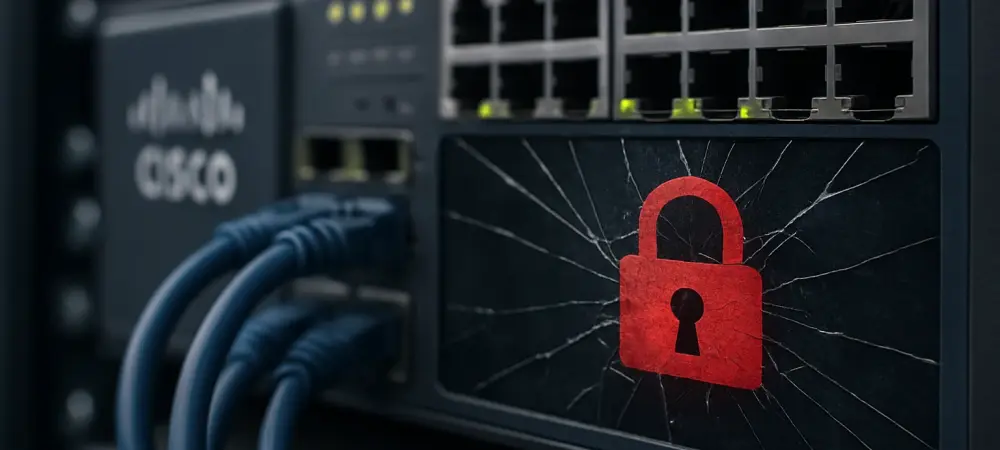Setting the Stage for a Cybersecurity Crisis
Imagine a sprawling enterprise network, the digital backbone of a global corporation, suddenly exposed to unauthorized access due to a single overlooked flaw. This scenario is not mere speculation but a tangible risk tied to a recently uncovered vulnerability in Cisco Identity Services Engine (ISE) and ISE Passive Identity Connector (ISE-PIC), cornerstone tools for network security and access control. With a staggering severity score of 10/10, this flaw, identified as CVE-2025-20337, has sent shockwaves through the cybersecurity community, prompting urgent action. The potential for threat actors to execute arbitrary code with elevated privileges underscores the high stakes involved. This review dives deep into the technology behind Cisco ISE and ISE-PIC, dissecting the vulnerability and evaluating the response to this critical issue.
In-Depth Analysis of Cisco ISE and ISE-PIC Features and Flaws
Core Functionality and Importance in Enterprise Networks
Cisco ISE serves as a centralized platform for managing network access policies, ensuring that only authorized users and devices connect to an organization’s infrastructure. Its role in enforcing security protocols through authentication and authorization is indispensable for enterprises spanning industries like finance and healthcare. Complementing this, ISE-PIC passively collects identity information without requiring active authentication, enabling seamless integration into complex environments. Together, these tools form a robust defense mechanism, safeguarding sensitive data and maintaining operational integrity in dynamic network settings.
Unpacking the CVE-2025-20337 Vulnerability
At the heart of the current concern lies CVE-2025-20337, a vulnerability stemming from inadequate validation of user-supplied input. This flaw allows malicious actors to craft specific API requests that execute arbitrary code with high-level privileges on affected systems, bypassing the need for valid credentials. Such a critical oversight exposes the underlying operating system to potential compromise, making it a prime target for sophisticated cyberattacks. The ease of exploitation amplifies the urgency for organizations to address this gap in their defenses.
Scope of Impact Across Versions
The vulnerability affects specific versions of Cisco ISE and ISE-PIC, namely 3.3 and 3.4, regardless of how the devices are configured. Earlier iterations, such as version 3.2 and below, remain unaffected, offering a temporary reprieve to some users. However, the widespread deployment of the impacted versions in modern enterprise setups means that a significant number of organizations face potential risks. This broad scope highlights the necessity for immediate attention to software updates across affected systems.
Performance Under Pressure: Cisco’s Mitigation Efforts
Swift Patch Deployment and Industry Collaboration
In response to the discovery of CVE-2025-20337, Cisco acted promptly by releasing patches in ISE and ISE-PIC Release 3.3 Patch 7 and Release 3.4 Patch 2. This rapid turnaround reflects a commitment to securing customer environments against emerging threats. Credit for identifying the flaw goes to security researcher Kentaro Kawane of GMO Cybersecurity, whose expertise contributed to averting a potential crisis. While no evidence of exploitation in the wild has surfaced, the public disclosure of the vulnerability necessitates swift action to prevent opportunistic attacks.
Challenges in Enterprise Patch Management
Despite the availability of patches, deploying them across sprawling enterprise networks presents significant hurdles. Many IT teams grapple with balancing operational uptime against the need for security updates, often leading to delays in implementation. Such hesitations can leave systems vulnerable, especially as cybercriminals frequently target known flaws shortly after they become public. This situation underscores a persistent challenge in cybersecurity: ensuring timely updates without disrupting critical business functions.
Sector-Specific Risks and Real-World Implications
Industries with stringent security requirements, such as banking and healthcare, face heightened risks from this vulnerability due to the sensitive nature of their data. A breach in network policy management tools like ISE could lead to unauthorized access, data theft, or regulatory violations, with far-reaching consequences. The potential for reputational damage and financial loss in these sectors illustrates why addressing this flaw is not merely a technical issue but a business imperative.
Looking Ahead: Strengthening Network Security Tools
Evolving Threats and the Need for Vigilance
As cyber threats continue to evolve, the discovery of vulnerabilities like CVE-2025-20337 serves as a stark reminder of the importance of ongoing vigilance. Enterprises must adopt proactive cybersecurity strategies, prioritizing regular audits and updates to stay ahead of malicious actors. The dynamic nature of digital risks demands that tools like Cisco ISE remain adaptable, capable of withstanding increasingly sophisticated attack methods over time.
Potential Enhancements in Future Releases
Looking toward the future, Cisco is likely to integrate more robust input validation mechanisms and enhanced API security in upcoming releases of ISE and ISE-PIC. Such improvements could prevent similar vulnerabilities from emerging, reinforcing trust in these critical tools. Additionally, greater emphasis on automated patch deployment features might ease the burden on IT teams, streamlining the process of maintaining secure systems.
Final Thoughts and Next Steps
Reflecting on this critical vulnerability in Cisco ISE and ISE-PIC, it is evident that the severity of CVE-2025-20337 demands immediate attention, which Cisco addressed with commendable speed through targeted patches. The absence of reported exploits at the time provides a narrow window for action, yet the risk lingers for those who delay updates. Moving forward, organizations are encouraged to establish automated update protocols and invest in training for IT staff to handle such crises efficiently. Collaborating with cybersecurity experts to conduct regular vulnerability assessments also emerges as a vital step to fortify network defenses. Ultimately, the incident serves as a catalyst for reevaluating how enterprises approach software maintenance, pushing for a culture of readiness against the ever-shifting landscape of cyber threats.

